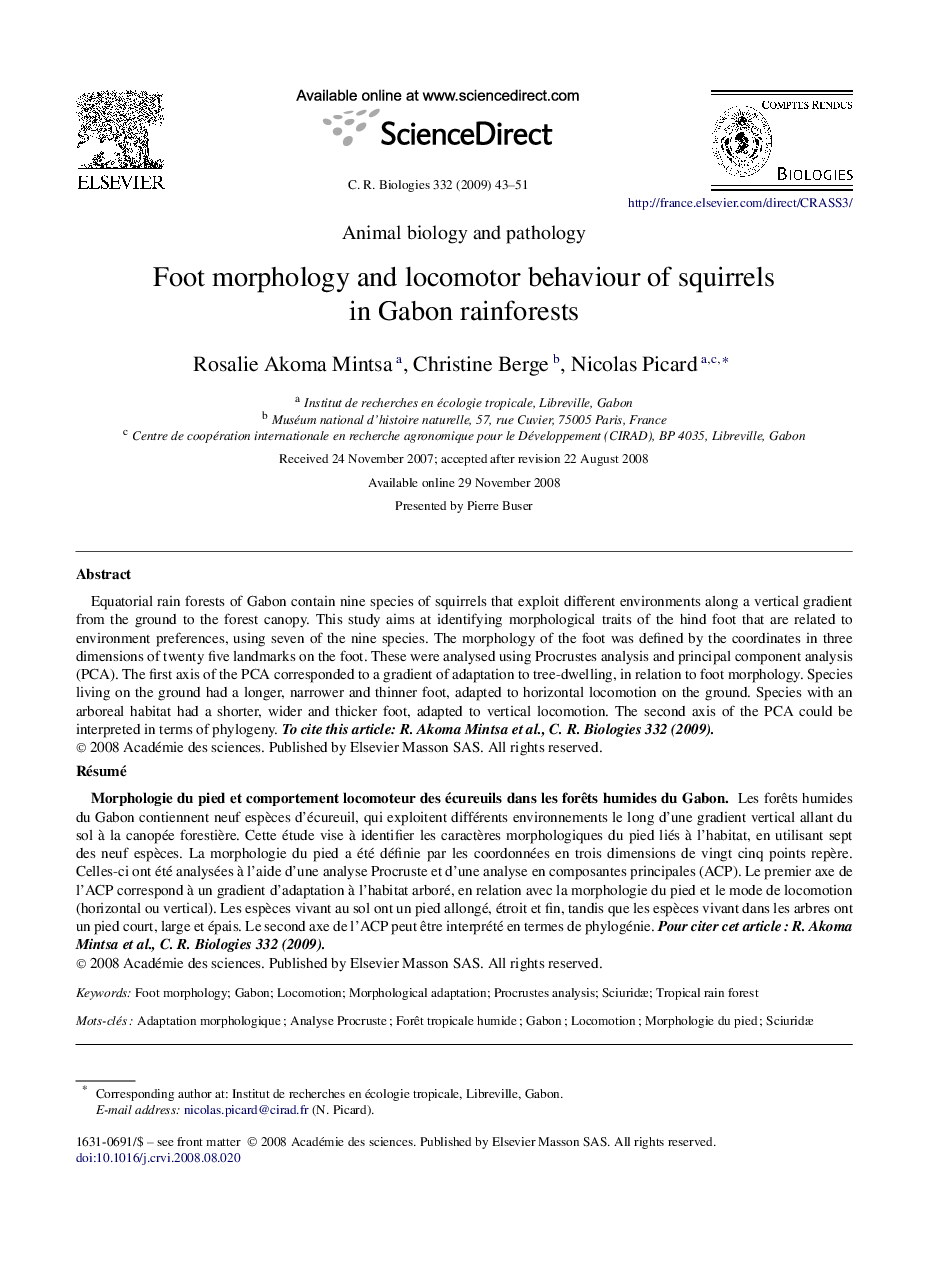| کد مقاله | کد نشریه | سال انتشار | مقاله انگلیسی | نسخه تمام متن |
|---|---|---|---|---|
| 2784496 | 1153821 | 2009 | 9 صفحه PDF | دانلود رایگان |

Equatorial rain forests of Gabon contain nine species of squirrels that exploit different environments along a vertical gradient from the ground to the forest canopy. This study aims at identifying morphological traits of the hind foot that are related to environment preferences, using seven of the nine species. The morphology of the foot was defined by the coordinates in three dimensions of twenty five landmarks on the foot. These were analysed using Procrustes analysis and principal component analysis (PCA). The first axis of the PCA corresponded to a gradient of adaptation to tree-dwelling, in relation to foot morphology. Species living on the ground had a longer, narrower and thinner foot, adapted to horizontal locomotion on the ground. Species with an arboreal habitat had a shorter, wider and thicker foot, adapted to vertical locomotion. The second axis of the PCA could be interpreted in terms of phylogeny. To cite this article: R. Akoma Mintsa et al., C. R. Biologies 332 (2009).
RésuméLes forêts humides du Gabon contiennent neuf espèces d'écureuil, qui exploitent différents environnements le long d'une gradient vertical allant du sol à la canopée forestière. Cette étude vise à identifier les caractères morphologiques du pied liés à l'habitat, en utilisant sept des neuf espèces. La morphologie du pied a été définie par les coordonnées en trois dimensions de vingt cinq points repère. Celles-ci ont été analysées à l'aide d'une analyse Procruste et d'une analyse en composantes principales (ACP). Le premier axe de l'ACP correspond à un gradient d'adaptation à l'habitat arboré, en relation avec la morphologie du pied et le mode de locomotion (horizontal ou vertical). Les espèces vivant au sol ont un pied allongé, étroit et fin, tandis que les espèces vivant dans les arbres ont un pied court, large et épais. Le second axe de l'ACP peut être interprété en termes de phylogénie. Pour citer cet article : R. Akoma Mintsa et al., C. R. Biologies 332 (2009).
Journal: Comptes Rendus Biologies - Volume 332, Issue 1, January 2009, Pages 43–51